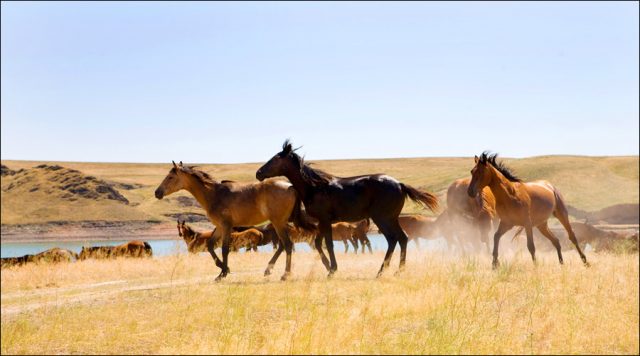Type the name of the breed you're looking for below
[wpdreams_ajaxsearchlite] Don't see the breed your're looking for? Click here and let us know!
Kazakh horse
| Country Of Origin | Kazakhstan |
| History and Background | The Kazakh Horse breed has been around since 500 B.C. There have been reports that the Russian Kazakh is actually related to the Chinese Kazakh; this is surmised due to the similar strains found in both horse breeds. The Russian Kazakh and the Chinese Kazakh are not identical, however, mainly due to the cross-breeding efforts that the former has undergone. There are two types of Kazakh horse that have developed over the years. They are the Jabe and the Adaev. Kazakh horses were bred using a handful of breeds. They were the Mongolian, the Arab, the Karabair, and the Akhal-Teke. Kazakh breeding was far from finished, however, until the 20th Century when the Russian Kazakh horses were crossed with the Thoroughbred, the Orlov Trotter and the Don horse breeds. The Kazakh is now a common breed. It is estimated that around 300,000 Kazakh horses can presently be found in Kazakhstan. |
| Use Today | Riding horse, Draft horse, Meat, Milk |
| Height | 13.2 to 14.2 hands (54 to 58 inches, 137 to 147 cm) high |
| Colour | Bay, Chestnut, Grey |
| Characteristics | They weigh between 400 to 500 kilograms (880 to 1,100 lb). The breed is criticized for a short stride and a jolting trot. However, they are also very hardy and able to cover long distances. The breed consists of two subtypes, the Adaev and the Dzhab or Jabe. The Dzhabe developed in the southern districts of Aktubinsk. They have a heavy head, thick, short neck, and deep chest. They have a straight back, strong legs and a well-muscled croup. The Adaevs are more refined with lighter heads, longer necks, and well-defined withers. Due to the primitive conditions in which they live, this strain is more susceptible to developing narrow chests and light bone structure. |
| Personality and Temperament | Strong, capable, willing and confident. |
| Other Considerations | The horses of the Kazakh breed are resistant to harsh weather conditions. They can survive with only wild grass or Artemisia for food. During the hard times of the year – when food is scarce and the cold is extreme – the horse stops growing to conserve its energy. Growth is resumed when food becomes plentiful again. Today, the Kazakh horses are seen mostly in western Kazakhstan, where there are over 300,000. The main use of the Kazakh is for riding, although they are also bred for horsemeat. |



